Future-proofing
the stair industry today.
Value engineered, tested and proven, code compliant stair components and solutions for Architects, Building Contractors and Fabricators.
Commercial Stair Components and Industrial Stairs Parts for Code Compliant Stair System Fabrication
Code Compliant Stair Components and Solutions for Architects, Building Contractors and Fabricators.
Essential Stair Components and Parts for Commercial and Industrial Buildings: NSP's Code-Compliant Solutions
In the world of architecture and construction, stair components play a crucial role in ensuring safety, functionality, and compliance with building codes, especially in the context of modular stair systems. National Stair Products (NSP) has emerged as a leading provider of high-quality stair parts for commercial and industrial buildings, offering innovative solutions that meet the stringent requirements of modern construction projects. This article explores the various aspects of stair components and how NSP's products cater to the needs of architects, building contractors, and fabricators in creating safe and efficient stairways.
What are the key benefits of using National Stair Products for commercial and industrial stairways?
National Stair Products offers a comprehensive range of stair components that provide numerous advantages for commercial and industrial stairways. Their products are designed to meet the highest standards of quality, safety, and durability, making them an ideal choice for a wide variety of building projects. NSP's stair parts are engineered to be easy to install, saving time and labor costs for contractors and fabricators. Additionally, their components are versatile and can be configured to suit various stairway designs, providing flexibility for architects and builders.
How does NSP ensure IBC compliance in their stair components?
One of the primary concerns in stairway construction is compliance with building codes, particularly the International Building Code (IBC). National Stair Products takes this responsibility seriously, ensuring that all their stair components are IBC compliant. They achieve this by rigorously testing their products and adhering to strict quality control measures throughout the manufacturing process. NSP's team of experts stays up-to-date with the latest IBC requirements and incorporates these standards into their product designs. This commitment to compliance gives architects and contractors peace of mind, knowing that the stair parts they use meet or exceed all necessary regulations.
What makes NSP's stair parts superior for high-rise building egress stairs?
High-rise buildings present unique challenges when it comes to stairway design, especially for egress stairs that play a critical role in emergency evacuations. NSP's stair components are specifically engineered to meet the demanding requirements of high-rise building stairways. Their products are built to last, capable of withstanding heavy foot traffic and the test of time. The company offers a variety of industrial-grade materials and finishes that ensure longevity and resistance to wear and tear. Furthermore, NSP's stair parts are designed to facilitate quick and efficient evacuation, with features such as non-slip treads and ergonomic handrails that enhance safety during emergencies.
How do National Stair Products contribute to safe and efficient stairways?
Safety is paramount in stairway design, and National Stair Products incorporates numerous features into their components to ensure the highest level of safety. Their stair treads are designed with slip-resistant surfaces to prevent accidents, while their railings provide sturdy support for users. NSP also offers safety gates and safety swing gates that can be integrated into stairways to control access and enhance security. The company's commitment to safety extends to compliance with OSHA regulations, ensuring that their products meet workplace safety standards. By providing these safety-focused components, NSP helps create stairways that are not only code-compliant but also prioritize the well-being of building occupants.
Which stair components are crucial for commercial building projects?
Commercial building projects require a specific set of stair components, such as modular systems, to ensure functionality, safety, and compliance with building codes. National Stair Products offers a comprehensive range of essential stair parts for commercial staircases, including treads, risers, stringers, and railings. These components are designed to work together seamlessly, creating a cohesive and structurally sound stairway system. NSP's commercial stair parts are engineered to withstand the high traffic typical of commercial buildings while maintaining their aesthetic appeal and ensuring slip resistance.
What are the essential metal stair parts for commercial staircases?
Metal stair parts are particularly important in commercial buildings due to their durability and fire-resistant properties. NSP provides a wide range of prefabricated metal stairs and components that are perfect for commercial applications. These include steel treads, risers, and landings that can be easily assembled on-site. The company's bolt-together systems allow for quick installation, reducing construction time and costs. NSP's metal stair parts are designed to comply with OSHA and IBC standards, ensuring that commercial staircases meet all necessary safety and regulatory requirements.
How do NSP's stair components enhance safety in commercial buildings?
Safety is a top priority in commercial buildings, and NSP's stair components are designed with this in mind. The company offers a variety of safety features integrated into their stair parts, such as non-slip tread surfaces, proper riser height adjustments, and sturdy railings. NSP also provides safety gates for access control and fall protection on platforms and landings. These components work together to create a safe environment for building occupants, reducing the risk of accidents and ensuring compliance with safety regulations.
What options does National Stair offer for customizing commercial stair parts?
National Stair Products understands that every commercial building project is unique, and offers a range of customization options for their stair components. Architects and designers can choose from various materials, finishes, and colors to match the building's aesthetic, including modular stair systems that offer versatility. NSP's stair parts can be configured for left or right-hand installations, providing flexibility in design. The company also offers custom fabrication services for special projects that require unique solutions. This versatility allows architects and contractors to create stairways that are not only functional and safe but also visually appealing and in harmony with the overall building design.
How do industrial stairs differ from commercial stairs in terms of components?
Industrial stairs have distinct requirements that set them apart from commercial staircases. These stairs are often subjected to harsher environments, heavier loads, and more frequent use. As such, the components used in industrial stairs need to be even more robust and durable than those in commercial settings. National Stair Products recognizes these unique needs and offers specialized stair parts designed specifically for industrial applications.
What specialized stair parts does NSP provide for industrial applications?
NSP offers a range of heavy-duty stair components tailored for industrial use. These include reinforced treads capable of supporting heavy machinery and equipment, as well as stringers designed to withstand increased loads. The company also provides industrial-grade railings and handrails that offer enhanced stability and support, ensuring they are OSHA compliant. For facilities with specific access requirements, NSP offers solutions such as work platforms, crossover stairs, and access platforms that can be integrated into existing structures or stand alone. These specialized components are engineered to meet the demanding needs of industrial environments while ensuring compliance with OSHA and IBC regulations.
How do National Stair Products address durability concerns in industrial stairways?
Durability is a critical factor in industrial stairways, given the harsh conditions they often face. National Stair Products addresses these concerns by using high-quality, corrosion-resistant materials in their industrial stair components. Their prefabricated metal stairs are built to last, with finishes that can withstand exposure to chemicals, extreme temperatures, and heavy use. NSP's industrial stair parts are rigorously tested to ensure they can endure the demands of industrial settings without compromising safety or structural integrity. This focus on durability not only enhances safety but also reduces maintenance costs and extends the lifespan of the stairway system.
What safety features are integrated into NSP's industrial stair components?
Safety is paramount in industrial settings, and NSP's stair components incorporate numerous features to enhance workplace safety. Their industrial stairs are designed with non-slip surfaces to prevent accidents in potentially hazardous environments. The company offers safety gates and guardrails that can be easily integrated into stairways and platforms to provide fall protection. NSP's industrial stair components are also designed to comply with OSHA regulations, ensuring that they meet or exceed workplace safety standards. By incorporating these safety features, NSP helps industrial facilities create secure work environments and reduce the risk of accidents.
What should architects consider when selecting stair parts for high-rise buildings?
Designing stairways for high-rise buildings presents unique challenges that require careful consideration of stair components. Architects must balance safety, durability, and efficiency while adhering to strict building codes. When selecting stair parts for high-rise projects, it's crucial to consider factors such as fire resistance, evacuation efficiency, and the ability to withstand high traffic volumes. National Stair Products offers solutions that address these specific needs, providing architects with reliable and code-compliant options for high-rise stairway design.
How do NSP's stair components meet the unique challenges of high-rise construction?
NSP's stair components are engineered to meet the demanding requirements of high-rise construction. Their products are designed with fire-resistant materials that comply with stringent building codes for tall structures. The company offers stair parts that can be easily prefabricated and assembled on-site, simplifying the construction process in the challenging environments of high-rise projects. NSP's components are also designed to minimize vibration and noise transmission, which is particularly important in tall buildings where stairways can span many floors.
What role do egress stairs play in high-rise building safety, and how does NSP address this?
Egress stairs are critical for the safe evacuation of high-rise buildings during emergencies. National Stair Products recognizes the importance of these stairs and offers components specifically designed for egress applications. Their stair parts for egress stairs are engineered to withstand the intense heat and stress of fire situations, ensuring that evacuation routes remain accessible. NSP's egress stair components include features such as photoluminescent markings for visibility in low-light conditions and durable materials that resist degradation under extreme temperatures. By providing these specialized components, NSP helps architects create reliable and safe egress systems for high-rise buildings.
How does National Stair ensure longevity and performance in high-rise stairway solutions?
Longevity and consistent performance are crucial for stairways in high-rise buildings, which must withstand years of heavy use. National Stair Products ensures the durability of their high-rise stairway solutions through rigorous quality control and the use of premium materials. Their stair components are designed to resist wear and tear, with finishes that maintain their appearance and functionality over time. NSP also offers ongoing support and maintenance recommendations to building managers, helping to extend the life of the stairway systems and ensure their continued safe operation throughout the building's lifespan.
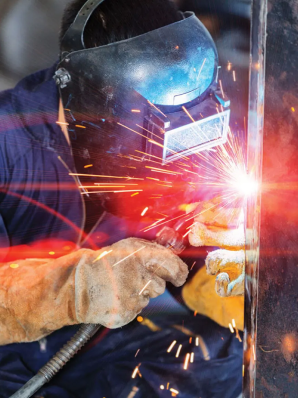
NEED A STAIR FABRICATOR?
Our network of regional and national stair fabrication partners includes professionals in stair, rail, landing design, engineering, manufacturing, fabrication, installation, and more.
OUR PRODUCTS
Concrete Stair treads
RHINO TRED®
These concrete treads minimize labor, cleanup, and logistical handling. The lightweight design minimizes job-site injuries and offers clients major cost savings all around.
View Product Information
Polymer Stair treads
PERMA-TREAD™
The precast polymer product meets commercial building codes both locally and internationally, making polymer a dependable choice for indoor and outdoor applications.
View Product Information
Metal Stair Treads and Pans
NSP/PACIFIC STAIR®
We manufacture Metal Stair Treads and Stair Pans To Exact Spec, suppling pre-fabricated metal stair treads and metal stair pans for new and restoration stair projects.
View Product Information
Temporary Stair Treads
TEMPTREAD™ and TREADX®
Temporary stair treads are an essential safety accessory designed to minimize slipping, tripping, and falls on unfinished metal stairs during construction.
View Product Information
Photoluminescent Stair Nosings
SAFE-T-NOSE®
Stair nosings for commercial, industrial, or residential building stair treads. Creating a photoluminescent / luminous path marking or abrasive contrasting strip for high visibility and non-slip.
View Product Information
Stairwell Barrier Gates
EGRESSGATE
EgressGate is designed to be universal. Arriving in a box as soon as the next day, ready to be mounted in any condition, and easily modified by the installer to fit any opening.
View Product Information
Photoluminescent Path Markings
SAFE-T-NOSE®
National Stair Products includes a wide range of photoluminescent path markings and exit signs. These markings and signs are designed to provide clear and visible guidance during emergencies, enhancing evacuation procedures and ensuring occupant safety.
View Product Information
Stair Tread Sound Dampening
QUIET TREAD®
A revolutionary product designed to reduce noise levels commonly associated with normal foot traffic on checker plate diamond plate metal stairs and landings.
View Product Information
Who we are
Your stair
expert.
Your product
supplier.
Your single
contact.
Our Purpose
Our mission is to provide comprehensive, professional, and code-compliant stair solutions that cater to the unique needs of Architects, Engineers, Building Contractors, and Fabricators. Our clients trust us to provide value engineered, tested and proven, code compliant stair components on time, every time.
Safety
Placing you and family above all else; safety brings us all home to those we love.
Services
Providing you with superior customer service to cultivate happy clients and lasting relationships.
Scale
Approaching your project, large or small, with the same attention to detail, reliability, and integrity.
Skill
Teaming you with skilled suppliers who have decades of in-the-field experience and deliver expertise, knowledge, and craftsmanship.
Sincerity
Communicating with you openly and honestly so that we may earn your trust and become a valued member of your team.
Success
Your referrals and repeat business are the ultimate measures of success—it is proof that we have built a quality environment with integrity and excellence for you.
Client Reviews
I had the pleasure of using NSP and was thoroughly impressed. Their commitment was evident in every product, while also providing exceptional durability, ensuring long-lasting performance. Overall, I would highly recommend National Stair to anyone in need of high-quality, reliable stair products, and I look forward to using them again in the future.
John F.

National Stair offers a comprehensive range of products. From their top-quality stair treads to their sturdy handrails, their products are designed with safety and durability in mind. I have used National Stair Products for several projects, and I am always impressed with the quality of their products. NSP is committed to providing excellent customer service and quality craftsmanship.
Edward T.

National Stair Products is a company that I highly recommend to anyone in need of top-quality and reliable stair products. I recently purchased their stair treads and risers for my buildings staircase project and have been thoroughly impressed with the level of craftsmanship and attention to detail.
William N.


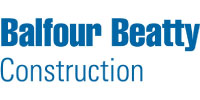
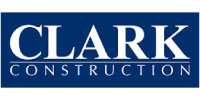
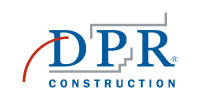

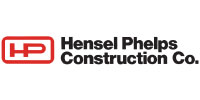
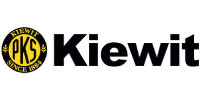
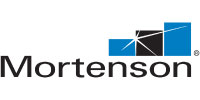
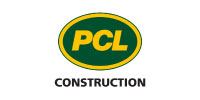



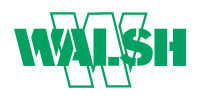
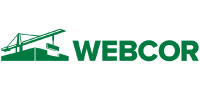
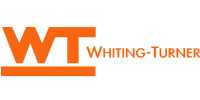
The Stair Expert Blog
Our blog posts offer valuable, engaging content on a wide range of topics, from education to news, with clear language and visuals for easy understanding. We strive for accuracy and welcome feedback to continue being a helpful resource for our readers.

